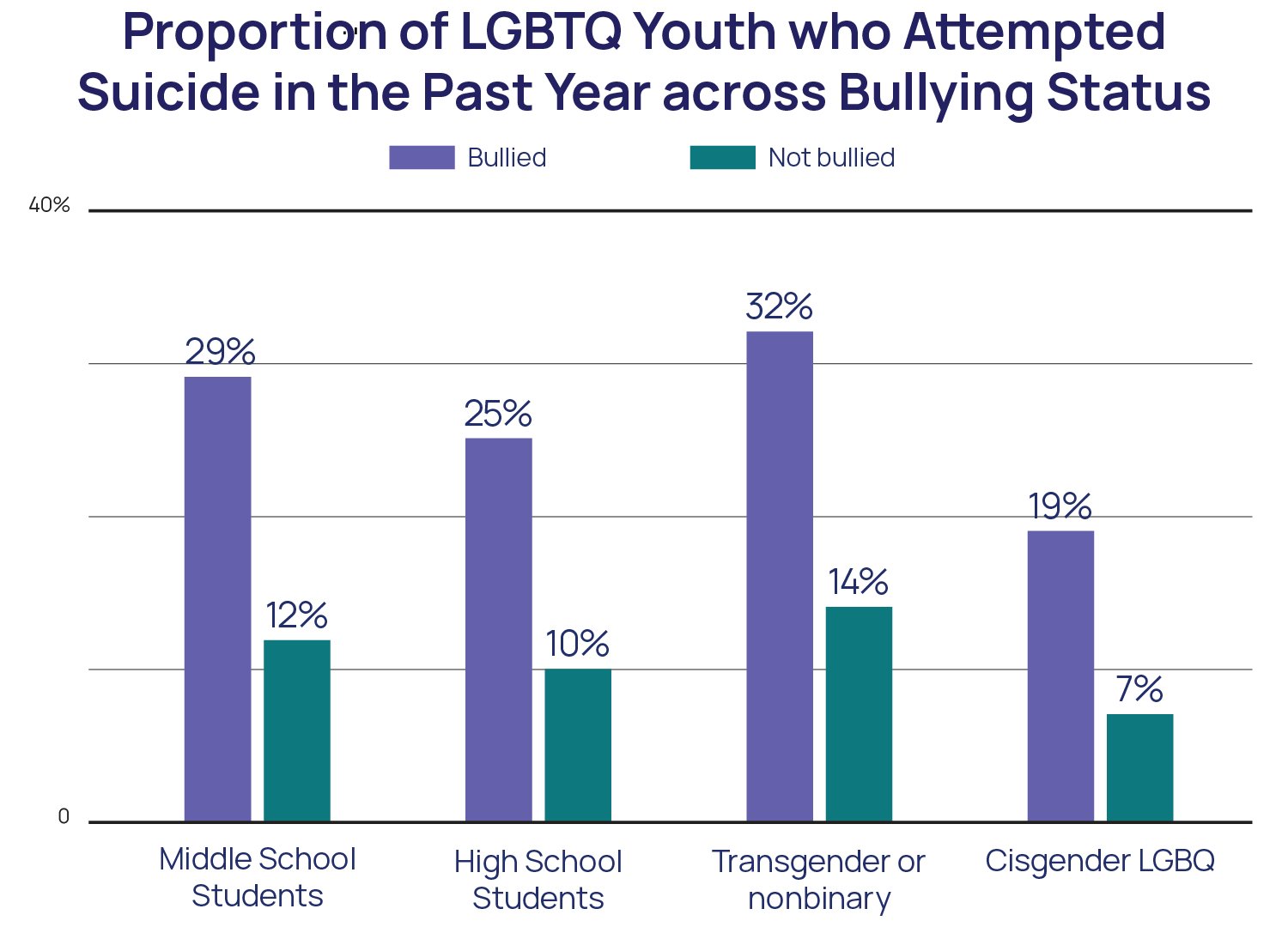LGBTQ+ youth are suffering from a mental health emergency—and arts spaces can help prevent it
Eli Lucero/The Herald Journal via AP
Teenage years represent a pivotal point in life: a time of change, growth, and identity formation for most. But for many LGBTQ+ identifying teenagers, identity destruction might be a more accurate characterization of this stage in their lives.
In the past year, a shocking 42 percent of LGBTQ+ youth seriously considered attempting suicide, per the Trevor Project. Because of harassment, hate speech, misrepresentation, and family rejection, LGBTQ+ youth suffer from a barrage of severe social trauma.
The pandemic exacerbated this. Lockdowns robbed LGBTQ+ teens of their safe spaces. They suffered poor mental health, and 60 percent felt COVID-19 negatively affected their gender expression.
Leaving home posed a risk of contracting the virus. But complying with lockdown meant enduring denial, harassment, or abuse from family members who dismissed their identity or, worse, held it up to shame. Seeking tangible refuge seemed like a distant reality.
We must tackle this youth mental health crisis like the emergency it is. This involves enhancing accessibility to mental healthcare and destigmatizing the use of therapy and crisis hotlines. However, our existing preventive measures for promoting mental wellness among young people might not be as effective as we'd like. Lectures on the topic can come across as dull and preachy, while film and television portrayals that magnify mental health struggles could be too intense and unsettling for young audiences.
To address this pressing issue, we need a proactive approach, and one solution lies in pro-social activities within the arts. Engaging in peer-centered and comprehensive arts programs can provide a sanctuary to confront these disheartening challenges, supplying the crucial social support and respect that LGBTQ+ youth often lack within their homes.
Arts programs offer respite. They provide LGBTQ+ youth with support and a safe haven for self-expression. These spaces counter identity conflicts and boost self-esteem and social skills. And they are vital for post-pandemic recovery.
I produce digital content for a community arts initiative in Southern California. The program immerses middle-school students in the fine arts while highlighting the importance of individuality and creative freedom. While I was snapping photos at the program’s arts summer camp, several young students approached me, requesting that I not share pictures of them that revealed the name buttons on their lapels. These students included gender pronouns adjacent to their names—pronouns that presumably coincided with a gender identity they did not express at home. Some even chose names that better reflected their preferred gender. I wholeheartedly respected their requests, but it left me contemplating the implications.
In a socially-progressive world, clarifying one’s gender-preferred pronouns—(he/him; she/her; they/them, etc.)—has become standard introductory practice. We have developed this inclusive measure as a concerted effort to eliminate the gender binary standard and normalize the expression of gender fluidity.
This scenario speaks volumes when a young individual feels at ease expressing their identity among a group of strangers, yet hesitates to do so with those whom they eat dinner with every evening. The reason lies in the profound impact of existing in the company of like-minded artists, where one's well-being is nurtured without the burden of guilt. For those who haven't come out to their families, it can feel like leading a double life. Even in the absence of direct abuse, the presentation of inconsistent identities often gives rise to inner conflicts rooted in feelings of dysphoria and alienation. Constant code-switching can manifest into a debilitating storm of anxiety and depression.
As we anticipate a post-COVID world, the significance of these gender-affirming environments becomes even more pronounced for youth in the process of self-discovery. Last year, LGBTQ youth who had access to spaces that affirmed their sexual orientation and gender identity reported lower rates of attempting suicide than those who did not.
Artistic integration fosters collaboration, free expression, and meaningful dialogue, naturally cultivating environments of acceptance and empathy. Students engaged in arts-related programs consistently exhibit heightened self-esteem, improved social abilities, and enhanced leadership skills. The opportunity to spend time with like-minded peers, who share common passions, goals, and viewpoints, provides profound validation, particularly for those grappling with feelings of alienation.
In the past two decades, notorious policy changes have defunded arts programs and eighty-sixed them from school curricula. Efforts to sustain such programs through educational policies should remain firm, and leading educators must look toward independent arts initiatives to expand outreach. And extending these art programs beyond traditional fine arts, such as creative writing, opens doors for any young person seeking a means of self-expression.
Dean Hesse/Decaturish
We must recognize the remarkable adaptability of young people. Prioritizing their connection, support, and affirmation of identity can serve as a precursor to battling this epidemic. Still, this is a deep-rooted issue—we’re fighting centuries of a heteronormative society that only legalized gay marriage eight years ago.
We continue to face a rising tide of alt-right extremists within the Republican Party, who’ve gained momentum in their race to declare war on the LGBTQ+ movement. Unfounded accusations of child "grooming" are contributing to a distorted and hateful perception of the queer community. Yet, with a revised approach, we can hope to break this pattern of prejudice and make meaningful progress.
Educating communities about mental wellness is essential to overcoming these stigmas, which tragically result in daily loss of life. As households gradually become more accepting of these discussions, it's crucial to maintain arts programs. These programs empower young artists to pursue their passions and provide a safe avenue for self-expression. The arts can revolutionize our approach to social issues for young people who yearn to express their identity without fear. It's imperative to emphasize that children's lives are at stake. Rather than stifling their sense of self, we must nurture and empower it.


